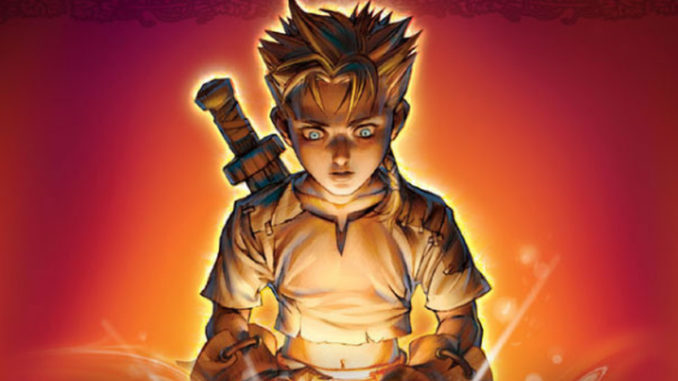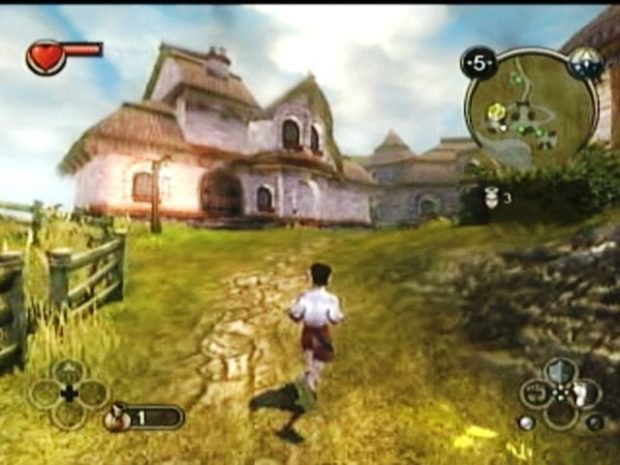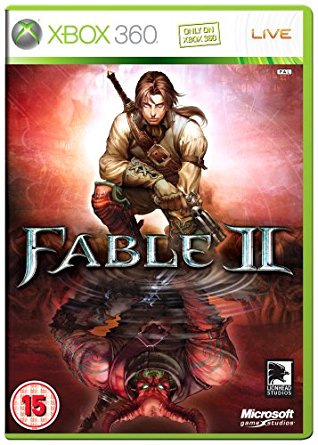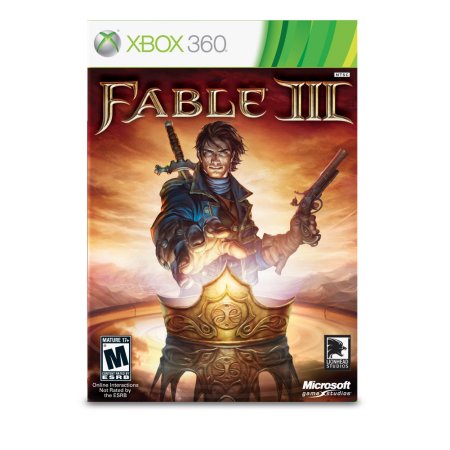
Out of all the exclusives developed by Microsoft Studios, no other series is in desperate need of resurgence than Fable. Set in the rich land of Albion, Fable is one of those titles that filled in the RPG void that was forever widened by Xbox’s plethora of shooters like Halo and Call of Duty. More than any other license, Fable has managed to combine Zelda like high fantasy adventure with decision-based story progression into a cohesive new entity. Lionhead Studios, the chief architect of the Fable franchise, is the fundamental element behind the series’ success and unfortunately its downfall. Not since the much-maligned third entry have fans been able to take a trip down the narrow dingy streets of Bowerstone City. Due to creative and fiscal mistakes, Lionhead Studios both brought to light and then condemned the world of Albion back into darkness. But regardless of the company’s mismanagement, Fable remains the pinnacle of what a console exclusive should and its absence on the Xbox One is sorely noted.
Fable (2004)
 The first Fable represented a milestone for the original Xbox back in 2004. Without taking the creative leap, it seems that Microsoft would have remained a company entrenched in the mindless button mashing of first-person shooters and sports games that in hindsight would have marred its evolution. Set in the titular world of Albion, Fable begins with the murder of a young boy’s family by bandits after they raid his village of Oakvalle. During the bandit attack, the young boy who eventually becomes the game’s protagonist is rescued by an old hero named Maze who goes on to train this young boy into becoming the next champion of Albion. Thus begins the journey of the protagonist from a helpless child into a champion. While the story’s first arc is sparse and its premise bland, the game progresses into a much deeper experience, one that can render a player either a hero or a villain in the world of Albion.
The first Fable represented a milestone for the original Xbox back in 2004. Without taking the creative leap, it seems that Microsoft would have remained a company entrenched in the mindless button mashing of first-person shooters and sports games that in hindsight would have marred its evolution. Set in the titular world of Albion, Fable begins with the murder of a young boy’s family by bandits after they raid his village of Oakvalle. During the bandit attack, the young boy who eventually becomes the game’s protagonist is rescued by an old hero named Maze who goes on to train this young boy into becoming the next champion of Albion. Thus begins the journey of the protagonist from a helpless child into a champion. While the story’s first arc is sparse and its premise bland, the game progresses into a much deeper experience, one that can render a player either a hero or a villain in the world of Albion.
Gameplay
The game’s exposition develops from a third person perspective as your hero interacts with different characters and places scattered throughout the land of Albion. Simply known as the “Hero of Oakvalle,” players can upgrade their skill points, complete side quests, and purchase new weapons from various merchants. Utilizing mostly melee weapons and crossbows, the timeline of the first Fable title resembles a medieval European landscape. But the key factor that comprised Fable’s ubiquity was its good vs evil character alignment. As stated before, based on certain actions and decisions the player makes, the protagonist can assume the role of either a hero or villain of the land. For example, if you decide to kill or steal from someone in the game the protagonist begins to accumulate points by leaning him more towards an evil trait, very similar to the light and dark side of the force in Knights of the Old Republic.
Such decisions not only changes the way others perceive your character but even changes the physical appearance and powers of the main character. Your eyes become red with passion, your skull can grow horn-like protrusions, and your skin pales to resemble a corpse. Such visual motifs gave credence to the developer’s emphasis on morality as the guiding force behind Fable’s story progression. With every action a player makes the story propels further and further into new directions. Consequences and subplots became the focal point behind this new RPG franchise, unlike other RPG series who exposition unfolded in a linear progression.
A brilliant decision made by a studio at the height of its creative prowess. Peter Molyneaux, the creator of Lionhead Studios, has gone on record as stating the company’s desire to give players an RPG experience that felt like children’s novel. Fable certain delivered on this point, as the world of Albion was both real and otherworldly in its visual aesthetic.
The original Fable received positive reviews worldwide during its initial release and it helped put the original Xbox on the map as a console capable of appeasing the RPG fan base. Molyneaux even used famed musical composer Danny Elfman, known for working with Hollywood giants like Tim Burton, to create the score for Fable. Elfman incorporated a small orchestral score that gave the game a bombastic vibe that all the more heightened the product’s rich fantasy landscape. With all its long stretches of deep forest and Northern snow drifts, Elfman’s score correlates with each environmental shift. With all this set into place, Fable wound up selling over 1.5 million copies worldwide and was the penultimate Xbox exclusive behind Halo and Knights of the Old Republic series. An expansion pack, titled Fable the Lost Chapters, released in 2005.
This extended version included all the DLC from the original game plus new weapons and map locations to venture. Such was the brilliance of the original Fable that it single-handedly set the trend of repacking older titles into what is known today as Game of the Year Editions. But Fable would not end with the culmination of the first game, and a sequel followed not long after.
 Fable 2 (2008)
Fable 2 (2008)
Lionhead Studios’ follow up proved to be the ace in their deck of cards. Focusing more on character development, relationships, and true to life decision making, Fable 2 epitomized its developer’s insistence on expanding the boundaries set by its predecessor. Unlike the first entry in the franchise, Fable 2 allowed players to get married, own property, hold jobs, and quest with other players cooperatively utilizing the Xbox 360’s online capabilities to full capacity. Not only could a player have a family, but he also had a travel companion in the form of a dog that enabled the protagonist to find hidden treasure scattered throughout the Albion landscape. Now, wealth was not acquired through combat but rather from labor. For example, your character can become a blacksmith or join a guild to acquire money rather than the usual trope of hacking and slashing through endless waves of enemies as in other RPG’s.
Molyneaux and his team made the brilliant choice of not rehashing the same elements from the original game and thus helped unshackle the surrealistic bonds of the role-playing genre. Surrealism and fantasy were broken in Fable 2 giving way to a new hybrid of realistic adventure. Gamers felt they were a tangible organism breathing and living the world they inhabited. Albion now evolved into an era resembling European Colonialism. Crossbows gave way to muskets; medieval hilts gave way to 17th-century foil swords. Such changes to the in-game world made players feel like time had passed over the centuries. Locations and towns were recognizable but somewhat different. The passage of time brought true change to the culture of Albion and with this change came new technologies.
Fable 2 takes place some 500 years after the events of the first game and each nook of Albion changed over the course of five centuries. But unlike its forebearer, Fable 2 places greater emphasis on story progression rather than the much-criticized linear narrative of the previous entry. Here, story progress is based on quest completion rather than the unfolding of subplots. The world of Albion is now much more expansive even though many of the locations used in the first game are cut off due to in-game events that have taken place over the centuries. The Hook coast is inaccessible at first but through the DLC packs that followed players gain full access to this forgotten land mass. While the Plot is more intricate and deep-lying, Fable 2 can at times be confusing with many holes in its story arc that came into criticism back in 2008.
Plot
Fable 2 begins in Bowerstone with your character known solely as “sparrow†is summoned to the Lord Lucien’s manor for a meeting. There, depending on whether you choose a male or female protagonist, Lucien tells you of your heroic lineage and the reasons for why you survived the calamity known as “The Fallâ€. During this meeting with the Lord, your character is asked to perform a magical ritual that summons the heroes of legend. During this summoning, your character is killed by Lucien and taken to the realm of spirits. From this point, the plot takes you back to childhood where the protagonist is forced to rectify his death by the evil Lord and bring down his malevolent summoning tower known as the “Spire†which grants him unlimited power. Thus begins the journey of your hero and as the diegetic elements unfold, your character chooses once again through his actions, a heroic or evil alignment in the world of Albion.
Choices and Gameplay Design
While the plot can at times seem rudimentary for the RPG genre, the brilliance of Fable 2 lies in its developer’s design choices that give each play through a novel experience. Options were now the focal point of Fable 2 with variation through choice being the operative experience. Your character can now get married while spawning children and even have a same-sex marriage, which at the time, was something unheard of in a console RPG. Fable 2 pushed the boundaries of what the visual medium could achieve and it took creative leaps to achieve this feat. It is the ability to choose that is the fulcrum of Fable 2’s difference. Allowing you to have a say in everything ranging from who you marry to the kind of dog breed you’ll raise as your travel companion is what makes this second entry such a standout title. Nothing before it had ever touched upon the scale of options that Lionhead Studios implemented with its successor. With players choosing their own gender, a large portion of the female fan base that has long since been ignored up to that point gained representation within the industry. Progress, variation, change, evolution, all these factors played a pivotal role in pushing the series in a deeper direction. But Fable 2 proved to be the last of Lionhead Studios’ creative output since its follow up spelled the end for the franchise.
 Fable 3 (2010)
Fable 3 (2010)
Once again, the story unfolds in the world of Albion during the time of the Industrial Revolution. The plot centers on the children of the hero from the previous game. Logan, the eldest of the two boys, is the new ruler of Albion and his reign is perceived as tyrannical. The protagonist, being the second of the original hero’s offspring, is a nameless hero who seeks to overthrow his own brother and restore the land of Albion to an age of prosperity. Throughout Fable 3, the protagonist is guided in his quest by a string of non-playable characters who give aid to your character in combat and exploration. Such NPC assistance was not seen on such a scale up to that point in the series. This is most evidenced during the escape sequence in the catacombs in the first act of the game. Sir Walter Beck, the king’s former advisor guides the hero through a series of trials and engages in combat that renders you almost inconsequential to the battles. Beck nearly takes on every enemy encounter by himself with little necessity for your intervention. Such facile combat segments of the game gave Fable 3 much criticism during its initial run.
Returning to the diegetic aspects of the game, Fable 3’s main story focuses on the overthrowing of King Logan and with some minor plot twists, viewers see why the firstborn son of the famed hero became corrupt. Despite this twinge of surprise, the third entry from Lionhead Studios lacked much of what made the first two games such masterclasses in writing and world design. Much of the consternation from fans derived from Lionhead studios’ decision to set Albion in an age of technology and industrialism. A mere half-century separates the timeline of Fable 2 from successor, and such extremism in progress left little room for a fourth entry in the franchise. This circumstance of design set the downward spiral that was to come for Fable, and its fan base was baffled by this extreme advancement of the timeline. Fable 3 marked the end of the series as a dominant force in the RPG genre. While it still maintained much of the choice based plot advancement mechanism of the previous game, Fable 3 gave little in terms of nuance series progression. Quests were now repetitive, the land of Albion was a patchwork of surrealism and modernization that gave the world aesthetic a sense of unevenness, and the combat is as repetitive as its dialogue. Lionhead Studios disbanded a few years after the third incarnation of the once beloved series, thus ending the main franchise on a low note. But many have wondered what is to become of the Albion and the fantastical landscape it fits in.
Fable Legends and the Debacle
Much has been written on the disappointment gamers felt when Microsoft decided to pull the plug on the exclusive co-operative RPG that was supposed to Fable Legends. With its four heroes and a central villain being the focus of its gameplay, Legends marked a return to the rural fantasy that was abandoned by the modernization of Fable 3. Set hundreds of years before the original trilogy, this new coop team-based RPG would return the series to an age of folklore and myth. This new entry was intended to reinforce the social aspects of RPGs, allowing teams of players to share weapons and quests with the intended goal of subsuming the narrow single players’ aspects of previous games. But all the promise turned into dust and with the dissolution of Lionhead Studios in 2012, the Fable franchise was seen as a relic from a long-forgotten time of Xbox exclusives. Much like the mythology of its landscape, Fable faded into the lore and the world of Albion with it.
The Future of the Fable Franchise
While fans were given Fable Fortune on the Xbox One and PC last year, few expected a free to play card-based game to be anything like the original trilogy. It appears that Fable was heading into new territory that resembled something like Magic the Gathering rather than its true roots adventure roots. With Sea of Thieves failing to live up to expectation, Microsoft is in desperate need of an exclusive RPG experience. But then Peter Molyneaux came back into the spotlight. With the Microsoft Corporation investing millions into the Fable series, former game designer Molyneaux has hinted at the possibility of there being a fourth Fable in the works. This certainly is not out of the realm of possibility as industry insiders claiming that Xbox will make during the E3 conference later on this month. But regardless of this decision, a Fable 4 would have to reset the gears and serve more as a prequel than a full-fledged sequel. With a befuddled timeline that is convoluted as The Legend of Zelda, Fable has too tears in its fabric to simply wash away all the mistakes its third act had done to the original trilogy. The land of Albion is as dense and lush as Hyrule ever was and with the graphical capabilities of modern hardware, this breath of scale can pushed to even greater heights. Microsoft made the right move in bringing the original Fable trilogy to its backward compatibility campaign but simply revisiting older titles isn’t enough to resurrect the beloved series from its tomb. If Fable 4 is really in development than Microsoft will make up for all its cancelled titles and missteps it’s made with its flagship console. With every decayed building and blacksmith shop closed until further notice in Bowerstone, Fable 4 would surely bring the franchise back to its former glory.


Leave a Reply